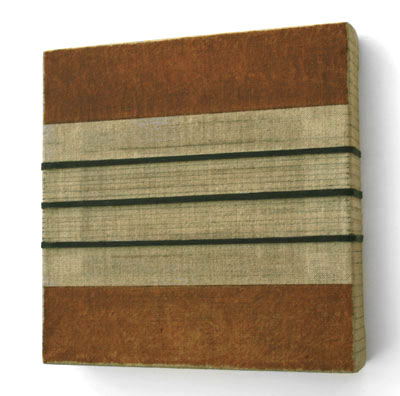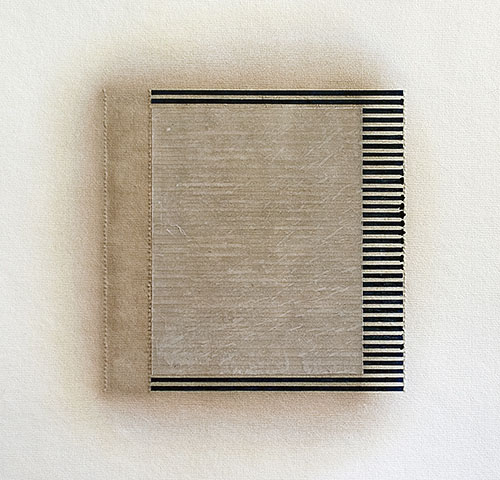 |
Eleanor Wood has skirted the periphery of Minimalism for her entire career, fine-tuning her obsessive, hypersensitive and exquisite miniature technique. In 2002 she moved from her native England to California, and the displacement served as a catalyst for a body of work that demonstrates a departure from her previous practice and a rift with Minimalist orthodoxy.
 |
 |
This sense of proportion is further exaggerated in the recent pictures on Belgian linen (Limits and Crossings), painted as a single group of 24 eight-inch squares. Here the stretchers themselves are deep in comparison to the size of the format, and the materials now project even more from the support, an assertion of physicality that seemed on the point of dissolving in the works on paper. The imagery (usually horizontal bands or lines) no longer floats but tends to grip the support with concentrated tenacity, often wrapping around one or both sides, which are now an active part of the image itself.
 |
–DAVID OLIVANT
I really like the fresh perpective you did on the issue. Really was not expecting that when I started off studying. Your concepts were easy to understand that I wondered why I never looked at it before. Glad to know that there’s an individual out there that definitely understands what he’s discussing. Great job!
Very handsome work, good review. Thanks